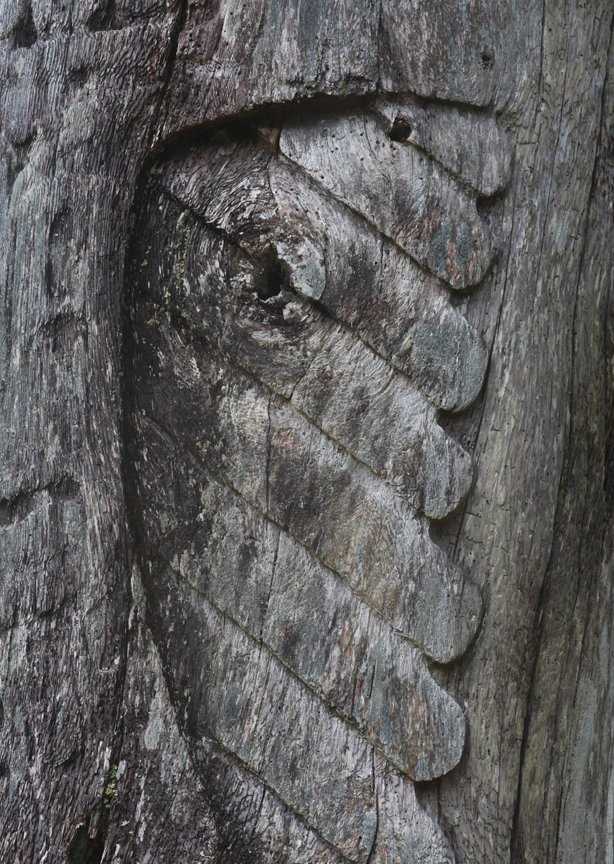Today we had the great privilege of visiting the ancient village of Skan Gwaii. This is one of the world’s great cultural sites, on par with Palenque or Skellig Michael. Here, totem poles still stand where they were originally erected a hundred and fifty years ago. Poles preserved in museums are beautiful, but there is no experience quite like walking beneath the originals.
By small boat we scuttled ashore and scurried up the beach. But after this rattle and hum, a feeling of profundity enveloped us as soon as we stepped into the forest. Just a few paces took us to the village, where huge moss-clad posts and beams, outlining houses, were returning to the earth. Our Haida guides described how the finest houses were semi-subterranean, with a large plank-lined excavation at the center of each massive structure. They showed us the two styles of Haida houses, with two or six gigantic roof beams.
But the greatest works at Skan Gwaii are totem poles. Many of these have already been removed and are familiar to all who have visited the museum at the University of British Columbia. But the mortuary poles stand undisturbed. These flare skyward, since each once held noble remains. Originally planked over to resemble bentwood chests, the tops of these poles now show recesses in which chiefs were interred. We saw many of these poles, some worn by time and vicissitude into rounded unrecognizability, others crisply identifiable as eagles, beavers or killer whales. The art of the Northwest Coast is a powerful tradition, and we are lucky to find it well-represented in many a museum, yet the totem poles and house frames of Skan Gwaii connect us to the deep roots of this culture like no other place.
The southern tip of Haida Gwaii is rich not only in cultural but also in natural history. We struck out by minor boat to savor the texture of the edge of ebb tide. Many of us also enjoyed seeing sea lions sprawling over the rocks, and barking or roaring, according to their kind, from their rough-and-tumble redoubts. Riding through the wild waves of the outside of the islands gave us new-found respect for any kind of creature – human or otherwise – who could wrest a living from this rugged seascape.







